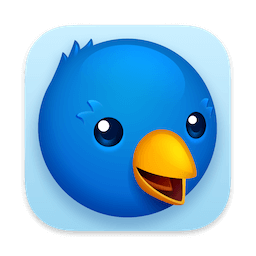
The timeline has a setting to be unified, showing all replies and direct messages in the main timeline. Swipe a tweet from the left to right to reply, and from right to left to see a conversation. Delightfully, gestures are also integrated. Controls for reply, retweet, favorite, and an ellipses for more items appears on a tap of a tweet. Twitterrific’s timeline is cleaner than ever. Somehow The Iconfactory has cooked up some secret sauce that will take care of business for you. In the past, and in other clients, you would have to be shown an ugly Twitter web form to sign in with manually. Tap each one you want to add, and Twitterrific handles the rest.

When you allow it to, it will show the avatars of all the accounts you have signed in to iOS. When you launch Twitterrific 5 for the first time, it will ask you if it can access your Twitter accounts in iOS’ settings.
TWITTERRIFIC FOR WINDOWS WINDOWS
Twitterrific 5 captures the smoothness and fluidity of iOS, a look and feel reminiscent of Windows Phone, and the “sidebar”, browser, Tweet composer, and image popovers pay homage to WebOS’ cards. Twitterrific 5 feels like the intersection of all the great interface aspects of iOS, Palm’s WebOS, and Microsoft’s Windows Phone. It is not only an all-new direction for The Iconfactory and Twitterrific, but it is a new direction for the potential of an iOS app. It always felt a step behind other clients, and it had really started to show in recent months. That is not to say I didn’t have some qualms with Twitterrific 3 & 4. As I alluded to earlier, I am a fan of simplicity. However, Twitterrific remained very bare bones compared to other apps, something I enjoyed. It had the same feature set as the iPad app did, and cautiously returned features as needed.
TWITTERRIFIC FOR WINDOWS UPDATE
Then Twitterrific 3 (and 4, since 4 was really an evolution of 3) came to the iPhone, actually being an update to the iPad app. Where version 2 had feature overflow, Twitterrific for iPad went back to the bare minimum. They took the opportunity afforded to them by the short time to develop the app to strip Twitterrific back to basics. When the iPad came out, The Iconfactory was again first to have an app out for the new device. However, it suffered from feature creep and interface bloat.

It packed in just about every feature that could be thought of but the kitchen sink. That is why Twitterrific 2 was a little surprising. I have always admired The Iconfactory for their attention to simplicity. The initial iOS app was a basic way to read, tweet, and reply, just like its big brother on the Mac. Twitterrific for iOS was my first app downloaded from the App Store as soon as I had purchased my iPhone 3G on launch day in July 2008. While Twitterrific’s roots are on the Mac, it is the iPhone, and later the iPad, where its story really takes flight. It started as simple as Twitter itself, and contributed some features back to Twitter that we all take for granted now. For the years that I have been on Twitter there is one app that I have used primarily to interact with the service - Twitterrific. Most of my friends over the past few years, both local and afar, started as acquaintances on Twitter.


 0 kommentar(er)
0 kommentar(er)
